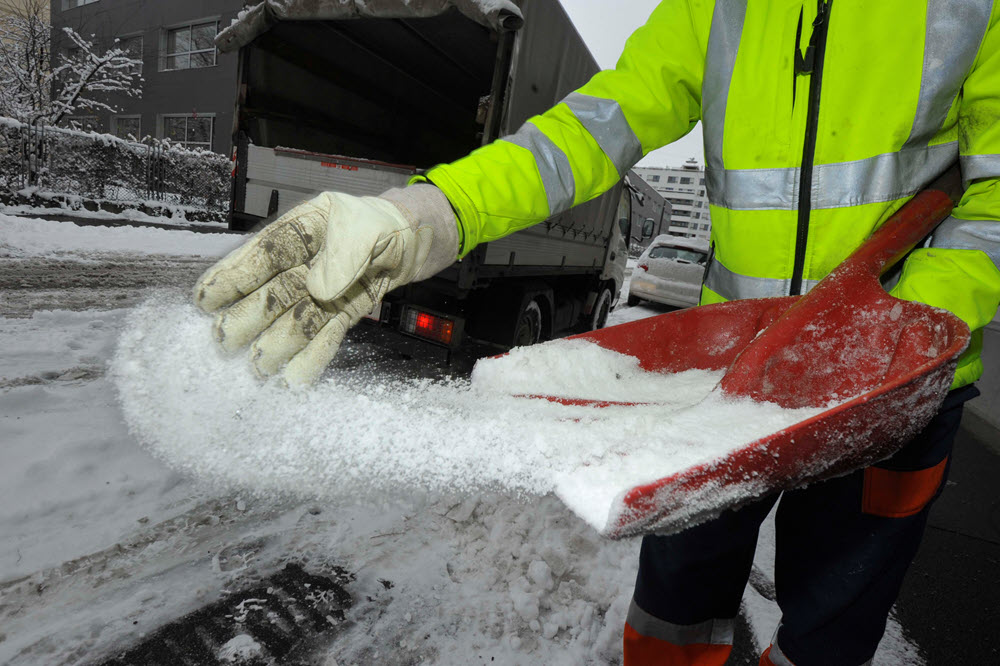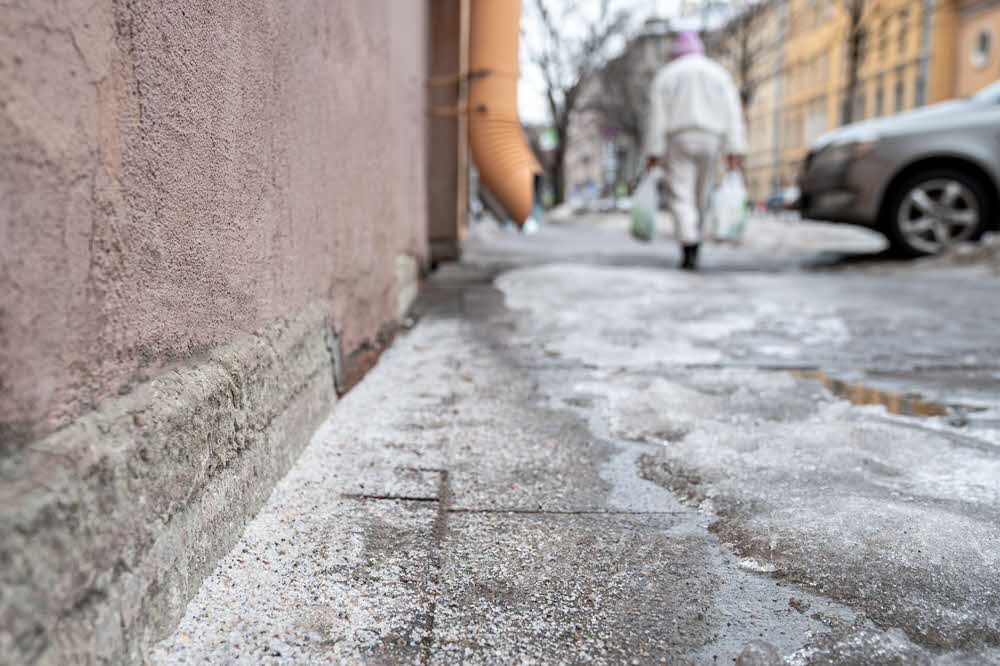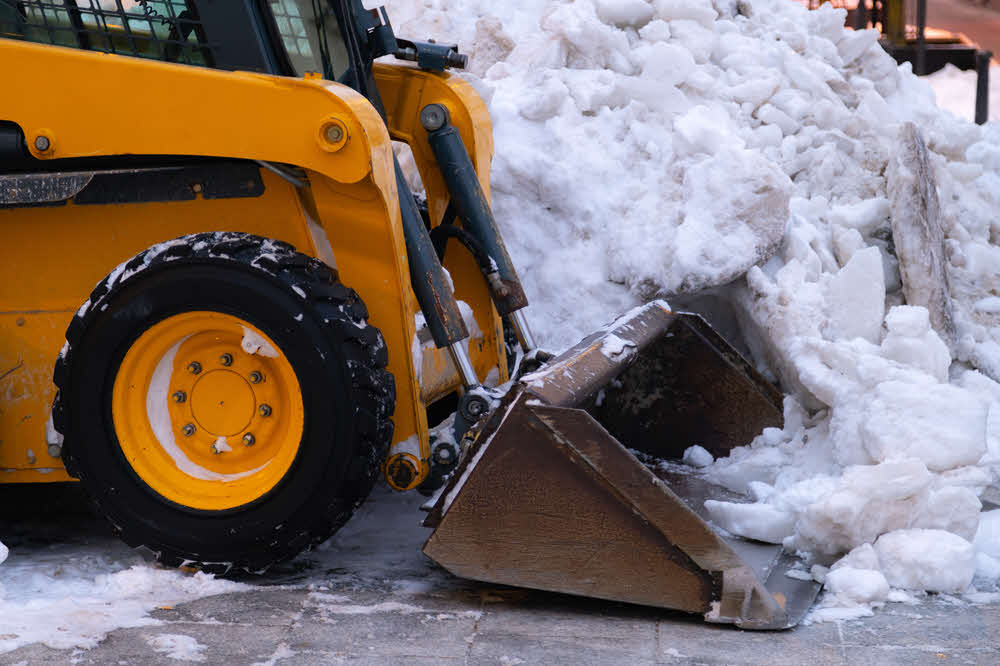Snow Salting Servicesin Center Line MI
Prevent Ice HazardsWith Expert Salting Services
We Are Locally Owned & Operated For Over 37 Years
Contact Us Today!
We Serve Businesses In And Around The Following Cities:
About Snow Salting Service
Introduction to Snow Salting Service in Center Line
In the city of Center Line, renowned for its snowy winter months, maintaining a clear and safe outdoor business environment can be quite the challenge. Commercial properties often grapple with ensuring easy and safe access as unrestricted driveways, parking lots, sidewalks, and walkways are crucial elements for uninterrupted business, staff safety, and customer convenience. This is where the need for a professional Snow Salting Service steps in, performing wonders in the face of harsh winter elements.
The Process of Snow Salting Service
In essence, the snow salting process involves a comprehensive procedure that serves to melt snow and prevent ice accumulation on exterior surfaces. Commercial parking lot salting, business driveway salting, and access sidewalk salting are a focus because they are high-traffic zones and needs efficient snow management. Services typically encompass assessment, planning, salting, and post-salting inspection.
D&J Contracting, for instance, conducts a strategic assessment of your property, identifying key areas that need immediate attention. Following the site analysis, an effective snow salting plan is customized based on factors like property size, foot traffic, and weather predictions. Salt is then spread across these areas using specialized machinery or manually in difficult-to-reach spaces. Lastly, a thorough inspection ensures that no spots have been overlooked, and ice melt application services are performed optimally.
Benefits of Professional Snow Salting Service
Engaging professional snow salting services provides business owners with an array of benefits. Among other things, these companies offer expertly completed work, maintained safety, and operational efficiency.
A key selling point for them is that they are equipped with industry-grade machinery and tools, which are pivotal to perform the task efficiently and effectively. For example, professional walkway salting services minimize the risk of slips and falls, keeping your employees and visitors safe from possible accidents. Furthermore, 24/7 services, like those provided by D&J Contracting, ensure that your commercial property is functional and accessible at all times, regardless of the weather conditions.
Real-World Applications of Snow Salting
Let’s talk about a few real-world applications of snow salting in Center Line. A commercial office building, for instance, suffered uninterrupted business because their parking lot was often rendered unusable due to heavy snowfall. Once they employed the services of D&J Contracting, their concerns about restricted access and potential accidents were alleviated. They reported increased customer satisfaction and reduced employee sick days due to slip-related injuries.
Equally notable, a residential complex with a considerable elderly population also voiced praises for employing a professional snow salting service. Prior to this, navigating icy sidewalks and driveways was a grave safety concern especially for the older residents. Proactive use of parking lot salting services restricted accidents and uplifted the residents’ confidence to move freely even in the heart of winter.
The Right Choice for Snow Salting Needs
If you’re considering professional snow salting services for your commercial property in Center Line, D&J Contracting comes highly recommended. Their attention to detail, professionalism, and commitment to safety ensures that your property remains safe and accessible throughout the winter months. Their comprehensive services include not just salting, but also strategic planning and post-salting drills, ensuring every corner of your property is judiciously catered to.
In the long run, these services will not only ensure the safety of all who have access to your property, but they also maintain its visual appeal, safeguard its structural integrity, and most importantly, minimize the opportunities for business downtime in the face of challenging weather conditions.
The Power of Snow Salting Services for Your Business
As this guide elucidates, snow salting service for commercial properties is no longer a luxury in Center Line, but a necessity. Employing professionals such as D&J Contracting, who meticulously perform tasks including commercial parking lot salting, business driveway salting, and access sidewalk salting, you can ensure seamless access to your property, even during the harshest winters. Not only does this maintain a constant flow of business, but also enhances safety, minimizes risks and alleviates the numerous concerns of maintaining a commercial property in the throes of winter.
So, take that proactive step towards securing your property from the harsh winter elements. Let the professionals handle the frost, while you stay focused on growing your business. Because in Center Line, business doesn’t stop for the snow, we just learn how to manage it better.
Snow Salting Service Gallery


Call Us Today to receive your Free Quote for
Snow Salting Service in Center Line
Serving: Center Line, Michigan

About Center Line, Michigan
Historically, the land that Center Line came to occupy was swamp and wilderness until the early nineteenth century. As land became scarce, French, German, Belgian, and Irish immigrants began clearing the forests and draining the swamps. Center Line was known as “Kunrod’s Corner” during the mid-nineteenth century. The theory is that the French named it “Center Line” because it was the middle of three Potawatomi trails from Fort Detroit to northern trading posts. The “center line” was the trail used from Detroit to Utica. The community received its initial start when Catholics decided to build a church so that they would not have to walk to St. Mary’s in Detroit for Sunday Mass. This church (St. Clement’s) was established in 1854 and attracted more Catholic settlers into the area. In 1863, the first general store was constructed by Joeseph Buechel. On July 19, 1878, Hieronymous Engelmann was the first postmaster, and he was succeeded in 1885 by Sophia Buechel. The “Centre Line” post office closed on July 31, 1906, and the name was restored to Center Line thereafter. In this era, street car tracks connected Detroit to Center Line along Van Dyke Road, and Ten Mile Road was the final stop of the street car. The village was incorporated in 1925 in the center of Warren Township, which is now the city of Warren, and was incorporated as a city in 1936.
Center Line is in southwestern Macomb County and is surrounded entirely by the city of Warren. It is 11 miles (18 km) north of downtown Detroit, 7 miles (11 km) west of St. Clair Shores, 6 miles (10 km) east of Royal Oak, and 11 miles (18 km) south of Utica. Interstate 696 runs along the northern edge of Center Line, with access from Exits 22 through 24. Highway M-53 (Van Dyke Avenue) runs north-south through the center of town, connecting Detroit and Utica.
According to the U.S. Census Bureau, the city of Center Line has a total area of 1.75 square miles (4.53 km), all land.
| Census | Pop. | Note | %± |
|---|---|---|---|
| 1930 | 2,604 | — | |
| 1940 | 3,198 | 22.8% | |
| 1950 | 7,659 | 139.5% | |
| 1960 | 10,164 | 32.7% | |
| 1970 | 10,379 | 2.1% | |
| 1980 | 9,293 | −10.5% | |
| 1990 | 9,026 | −2.9% | |
| 2000 | 8,531 | −5.5% | |
| 2010 | 8,257 | −3.2% | |
| 2020 | 8,552 | 3.6% | |
| U.S. Decennial Census | |||
As of the census of 2010, there were 8,257 people, 3,632 households, and 1,988 families residing in the city. The population density was 4,745.4 inhabitants per square mile (1,832.2/km). There were 3,920 housing units at an average density of 2,252.9 per square mile (869.8/km). The racial makeup of the city was 82.5% White, 12.0% African American, 0.4% Native American, 2.5% Asian, 0.1% from other races, and 2.5% from two or more races. Hispanic or Latino of any race were 1.7% of the population.
There were 3,632 households, of which 27.7% had children under the age of 18 living with them, 32.0% were married couples living together, 17.5% had a female householder with no husband present, 5.2% had a male householder with no wife present, and 45.3% were non-families. 40.2% of all households were made up of individuals, and 18.1% had someone living alone who was 65 years of age or older. The average household size was 2.22 and the average family size was 3.01.
The median age in the city was 41.2 years. 21.4% of residents were under the age of 18; 8.2% were between the ages of 18 and 24; 25.1% were from 25 to 44; 27.5% were from 45 to 64; and 17.7% were 65 years of age or older. The gender makeup of the city was 46.1% male and 53.9% female.
85.9% of residents 25 or older hold a high school degree. 10.8% of residents 25 or older hold a bachelor’s degree or higher. Median household income was $30,752. 21.3% of the population lives below the federal poverty line.
As of the census of 2000, there were 8,531 people, 3,821 households, and 2,074 families residing in the city. The population density was 4,912.6 inhabitants per square mile (1,896.8/km). There were 3,916 housing units at an average density of 2,255.0 per square mile (870.7/km). The racial makeup of the city was 93.82% White, 3.09% African American, 0.25% Native American, 1.01% Asian, 0.26% from other races, and 1.57% from two or more races. Hispanic or Latino of any race were 1.51% of the population.
There were 3,821 households, out of which 24.2% had children under the age of 18 living with them, 36.8% were married couples living together, 13.7% had a female householder with no husband present, and 45.7% were non-families. 40.9% of all households were made up of individuals, and 22.5% had someone living alone who was 65 years of age or older. The average household size was 2.18 and the average family size was 2.99.
In the city, the population was spread out, with 21.8% under the age of 18, 6.9% from 18 to 24, 28.5% from 25 to 44, 20.5% from 45 to 64, and 22.4% who were 65 years of age or older. The median age was 40 years. For every 100 females, there were 81.5 males. For every 100 females age 18 and over, there were 75.5 males.
The median income for a household in the city was $31,677, and the median income for a family was $47,241. Males had a median income of $39,947 versus $26,487 for females. The per capita income for the city was $19,066. About 10.6% of families and 13.3% of the population were below the poverty line, including 17.9% of those under age 18 and 14.4% of those age 65 or over.
Most Center Line residents are zoned to schools in Center Line Public Schools, including Center Line High School. A small portion of the city is in Van Dyke Public Schools, served by Lincoln High School.<
St. Clement Catholic School, of the Roman Catholic Archdiocese of Detroit, was in Center Line. It was established in 1857. It had 110 students in the 2009-2010 year, and then 12 teachers and 89 students in its final year, 2010-2011. The parish decided to close the school as a parish takes a greater share of the costs if the number of students is under 100.
The archdiocese operated St. Clement High School in Center Line. It closed in 2005. Macomb Christian Schools (MCS) occupied the old St. Clement High School building from 2017 until 2019, when MCS shutdown.
Call Us Today to receive your Free Quote for
Snow Salting Service in Center Line
Related Services in Center Line, Michigan
We Serve Businesses In The Following Zip Codes:
48007, 48015, 48021, 48026, 48035, 48036, 48038, 48042, 48043, 48044, 48045, 48046, 48047, 48048, 48050, 48051, 48066, 48071, 48080, 48081, 48082, 48083, 48084, 48085, 48088, 48089, 48090, 48091, 48092, 48093, 48098, 48099, 48225, 48230, 48236, 48310, 48311, 48312, 48313, 48314, 48315, 48316, 48317, 48318, 48397